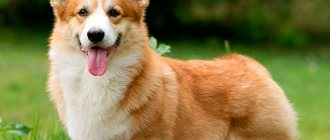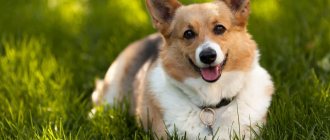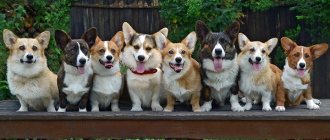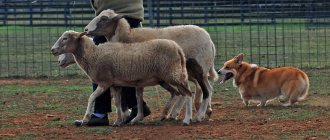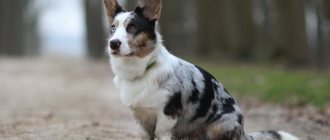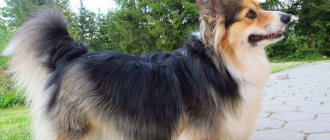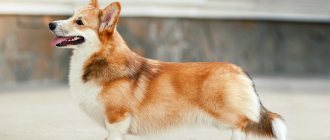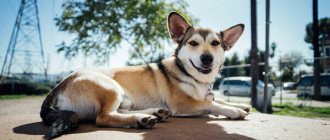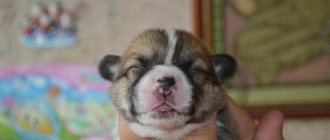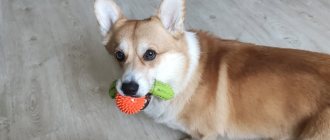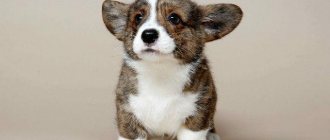Each breed of dog has a predisposition to certain diseases. We have collected information about typical diseases of the breed. Remember the symptoms of the disease, which every pet is at risk of developing, and then you can help him in a timely manner.
The Welsh Corgi is an English breed that is considered a royal dog. The birthplace of this breed is Great Britain (Wales). The exact origin is unknown. It is also called a small shepherd dog. Welsh Corgis have long been famous for their ability to herd cattle. In 1892, this breed was first recognized and admitted to dog shows. In 1926, the first Welsh Corgi breed club in Great Britain was founded. Since 1934, this breed has been divided into the Pembroke Welsh Corgi and the Cardigan Welsh Corgi.
- Country of origin : UK (Wales)
- Height at withers : Pembroke Welsh Corgi: 25 – 30 cm, Cardigan Welsh Corgi: 26 – 32 cm
- Weight : Pembroke Welsh Corgi: 10-15 kg, Cardigan Welsh Corgi: 12 – 17 kg
- Lifespan : 12-15 years
- Use : Companion Dog, Shepherd
Origin of the breed
Pembroke is a very ancient breed. Its origin is shrouded in myths and legends. According to a wonderful English legend, Pembroke Welsh Corgis served as horses for fairies and elves. The fur on the backs of the dogs, very similar to a small saddle, reminds us of the “racing” past. This is especially noticeable on sable-colored dogs.
As for earthly theories about the origin of the breed, they look like this:
- In England, it is believed that modern corgis are the fruit of love between Spitz-type dogs and local dogs. The first were brought with them by Flemish weavers who arrived in England at the invitation of King Henry I in 1107. Most of the newcomers settled near Pembrokeshire, in honor of which the corgi received its current name.
- In Scandinavia they are sure: if not for the Swedish Vallhund, the British would not have dreamed of having their own breed. In ancient times, the Vallhunds constantly accompanied Scandinavian sailors, who had close trade contacts in England. As a result, the Scandinavians brought several of their dogs there, they crossed with the locals, people slightly adjusted the resulting short-legged dogs and passed them off as their own breed.
Short legs are the result of human intervention. People needed a dog that could help herd cattle, that could maneuver between cow's legs and avoid being hit by its hooves.
FCI standard
Pembroke Welsh Corgis belong to FCI Group I - herding and cattle dogs. Breed standard No. 39 was approved on December 1, 2010.
- GENERAL APPEARANCE: A short, strong, well-built, alert and active dog, despite its small size it gives the impression of great strength both in body and spirit.
- IMPORTANT PROPORTIONS: The length of the muzzle corresponds to the cranial part of the head as 3 to 5.
- BEHAVIOR/TEMPERAMENT: Determined appearance of a working dog. The behavior is open, friendly, without a trace of aggression or nervousness.
- HEAD: In shape and appearance it resembles a fox, the expression is lively and intelligent.
- CRANIAL REGION: Skull: Fairly wide and flat between the ears. Transition from forehead to muzzle: Moderately pronounced.
- FACIAL REGION: Nose: Black. Muzzle: Slightly tapered. Jaws/Teeth: Strong, with an ideal regular scissor bite, i.e., the teeth of the upper jaw overlap the teeth of the lower jaw in close closure and are set vertically in the jaws.
- EYES: Straight set, round, medium size, brown, harmoniously combined with coat color.
- EARS: Erect, medium size, tips slightly rounded. A line drawn from the tip of the nose to the eye should, when continued, pass through the tip of the ear or close to it.
- NECK: Quite long.
- BODY: Medium length, not shortened at the lumbosacral region, slightly tapering when viewed from above. Topline: Straight. Chest: Broad and deep, well let down between the forelegs. The ribs are well sprung.
- TAIL: Short, preferably natural length. Docked: Short. Undocked: Set on in line with the topline (in continuation of it). When in motion or in an excited state, the natural carriage of the tail is above the topline.
- LIMBS FOREQUARTERS: Shoulder blades: Set obliquely and making an angle of 90 degrees with the humerus bones. Shoulders: Slightly curved, repeating the shape of the chest, as if covering it. Elbows: Close to the sides, neither loose nor tied. Forefeet: Oval, toes strong, arched and tightly closed, the middle two toes projecting slightly forward of the outer two, the pads strong and rounded. The claws are short.
- HINDQUARTERS: General appearance: Strong and flexible. Legs are short. The bone is wide all the way to the paw. Knees: Well angulated. Hock joints: When viewed from behind, the hocks are straight. Hind feet: Oval, toes strong, arched and tightly closed, the middle two toes projecting slightly forward of the outer two, the pads strong and rounded.
- GAIT/MOVEMENT: Loose and active, neither loose nor stiff. The forelimbs move with good reach, without excessive lifting, in balance with the hind limbs when the latter performs pushing movements.
- COAT: Coat: Medium length, straight, with a dense undercoat, never soft, wavy or harsh. Color: Actually, red, sable, fawn, black and tan, with or without white markings on the legs, chest and neck. A little white on the head and muzzle is acceptable.
- HEIGHT AND WEIGHT: Height at withers: Approximately 25 - 30 cm. Weight: For males -10 -12 kg; Bitches –9 – 11 kg.
- FAULTS/DEFECTS: Any deviation from the above provisions should be considered a defect, the assessment of which must be made in strict accordance with the degree of its severity and effect on the health and welfare of the dog, as well as the possibility of its traditional use.
- DISQUALIFYING VICES: Aggression or cowardice. Any dog clearly exhibiting physical or behavioral abnormalities must be disqualified.
- NOTES: Males must have two normally developed testes, fully descended into the scrotum. Only functionally and clinically healthy dogs with breed-specific characteristics can be used for breeding.
Infectious diseases
Treatment of Welsh Corgi dogs is always a costly and expensive matter, especially if the disease is severe. Therefore, it is worth more closely monitoring the health of your dog and preventing disease by paying due attention to preventive measures.
A real test for both the dog and all family members is the pet’s infectious diseases. These include the following: plague, enteritis, ringworm and leptospirosis. Treatment for the dog will take quite a long time and it will need constant care. For example, trichophytosis is difficult to treat.
To cure a dog of ringworm, more than just medications are needed. It is necessary to carry out a number of comprehensive measures for the pet’s recovery:
- regular disinfection of toys, beds, kennels and other “personal belongings” of the dog, as well as the room where he is constantly located, in order to destroy the fungus;
- it is necessary to completely isolate the dog from all family members and other animals;
- organize proper nutrition and proper care.
Most infectious diseases are transmitted through contact with sick animals. This includes not only other dogs, but also cats and wild animals. This is how, for example, lichen and plague are transmitted.
Preventative measures to protect your dog:
- It is necessary to minimize your dog's contact with other dogs you don't know, especially strays. Don't let your dog off the leash, so you can control his behavior and communication with other dogs. To become infected with distemper, a healthy dog only needs to touch the nose of a sick animal. In most cases, this disease is transmitted during sniffing. And for infection with trichophytosis, just one touch with a sick dog affected by lichen is enough. Of course, it is extremely difficult and unnecessary to completely exclude your dog from communicating with others. The dog must be socialized! Here are two such contradictory points that you will encounter. Just choose dog lovers as friends who take care of their dog. If you adhere to this, you will eliminate the risk of pathogen transmission by 80%.
- Do not walk your Welsh Corgi dog in dump sites. It is garbage that attracts most rodents, in particular rats - carriers of various infections. Gray rats are carriers of a serious disease - leptospirosis, which affects both dogs and people.
- Don't let your dog sniff other people's feces. This is a source of helminths.
- Monitor your dog's well-being closely. Pay attention to even the most minor changes. Perhaps the dog became lethargic, his appetite disappeared, and his nose became dry. Or you began to notice that the dog sheds profusely, and this has nothing to do with seasonal shedding. Excessive hair loss is the first sign that your dog has health problems. All of the above may be symptoms of serious illnesses. And only you can prevent them. If you detect and take your pet to the veterinary clinic on time, the easier it will be to defeat the disease. You should not ignore the symptoms, otherwise it can lead to serious consequences. Advanced infections are much more difficult to treat, and sometimes even impossible. The dog either dies or suffers serious complications such as loss of vision, hearing, paralysis of limbs, and so on.
- Keep all necessary vaccinations for your Welsh Corgi dog on schedule. This is one of the most effective methods of prevention. But before vaccinations, it is imperative to treat helminthiasis.
Character of the breed
Corgis are simply magical! They are smart, active and vigilant, and are easy to train.
The main character quality is a friendly attitude towards people.
A true “korzhonok” will politely sniff a stranger and may even allow himself to be stroked. Some individuals joyfully greet a stranger by wagging their tail (or the rest of it), squealing with pleasure and trying to kiss their new acquaintance.
The second feature of “Korzhiki” is activity. The dogs are small in size, but have more than enough energy. Representatives of the breed favor long walks, are happy to run after a ball or a puller, but you can keep silent about the love of training - this is a shepherd dog.
The third point is that corgis are for any “kipish”, except for a hunger strike. Dogs like to be aware of all the events around them, pets readily take part in them. Looking at cute animals, it seems that they are never in a bad mood. “Korzhik” always smiles, thanks to the peculiarities of the color of his face.
Courage is the fourth character trait worth paying attention to. Unfortunately, excessive fearlessness is the Corgi's enemy. A small dog considers itself big and dangerous, so it can easily get into a fight with a larger relative. And also, representatives of the breed are sure that they cannot find a better guard. Therefore, as soon as they hear the doorbell, pets begin to bark loudly and loudly, telling uninvited guests that the house is guarded.
And the fifth, perhaps most important, point - corgis are very smart. Little Shepherds just love to learn new things! Training for them (with the right approach) is a fascinating process, during which the pets’ eyes light up and the smile never leaves their faces.
Breed Features
Despite their developed intelligence and friendliness, there are many refuseniks among the “Korzhiks”. First of all, this is due to the fact that when purchasing a dog, people are sure: Corgis are equal to Yorkies or Chihuahuas. Small, sweet, they don’t require a lot of time for walking, and they don’t need training at all.
Cute dogs are shepherds that require both long walking and mental stress.
In the absence of these, the dog begins to go crazy from idleness, destroy the apartment and show its owners its teeth. And some “korzhiki”, in addition to the above, also bite their owners.
- Your pet's brain must be exercised.
- Corgis can be noisy. Being overly alert and reacting to various sounds, the pet is capable of barking at the slightest rustle. Screams outside the window, the noise of the elevator or on the staircase, the barking of someone else's dog are irritants for the “korzhonka”. Constant barking of a pet, when living in an apartment building, can become a source of conflict with neighbors. Of course, not all representatives of the breed are loud, but such dogs do exist.
- “Korzhiki” are jealous. Keeping with other dogs and cats is possible, but you should be prepared for jealousy on the part of a small shepherd.
- Dogs love to sing. “Korzhni songs” begin when pets are very happy about something. The animals growl, howl and squeal at the same time, making sounds vaguely reminiscent of “uru-ru”. Uninitiated people are frightened by these “uru-rushenki”, mistaking them for a threatening warning from the dog.
- Excessive attachment of some individuals to the owner. Thanks to this, the “shortbreads” follow their owners with their tails, trying not to leave them alone for even a minute. Such love on the part of a pet leads to inconvenience, because dogs require increased attention.
Speaking about the breed as a whole, not all of its representatives have these characteristics.
Common diseases
Diseases of the breed are divided into two types: genetic and acquired. Genetic ones include:
- Cataract. Changes in the structure of the eye lens lead to blindness.
- Corneal dystrophy. Corgis are susceptible to epithelial dystrophy, which damages the top layer of the cornea. Characteristic signs are clouding, erosions and ulcers of the cornea.
- Degeneration or malformation of the discs between the cervical vertebrae. This disease often requires surgery.
- Spinal cord damage. The disease begins in puppyhood, but fully develops only when the dog reaches 8 years of age.
- Bleeding disorder (Willeband's disease). The disease is poorly studied.
- Epilepsy. The disease can begin both at a young and old age. Clinical signs are seizures.
- Narcolepsy is a disease of the central nervous system characterized by sudden falling asleep and paralysis of the body upon awakening.
- Ehlers-Danlos syndrome. Lack of sensitivity and elasticity of the skin.
- Cystinuria is the appearance of cystine in the urine.
- Lack of immunoglobulin – lack of high immunity and susceptibility to various infections.
Acquired diseases:
- Obesity. Corgis love to eat delicious food, which is why they look like balloons with legs. The owner must monitor the pet’s diet and not overfeed it.
- Allergy. Most often, it occurs due to incorrectly selected food or its sudden change. It manifests itself in the form of irritation, red dots on the ears, chin and stomach, the dog is constantly itching.
- Raw eczema. The fur at the site of eczema sticks together, dandruff forms, and an unpleasant odor appears. Eczema occurs as a result of poor diet or swimming in open water. Helping your pet consists of trimming the fur around the wound and treating it, for example, with “chemi-spray.”
- Difficult childbirth. It would be a stretch to call it a disease. Most bitches have to have a caesarean section due to large fetuses.
Allergies in Welsh Corgis: types, symptoms, signs, treatment
An allergy is a reaction of the immune system caused by an allergen. Allergens include: food, as well as proteins from plants, animals and insects.
The reaction of the immune system can have a detrimental effect on the body of the Welsh Corgi. Over the course of several years or months, periodically the allergen can increase sensitivity and cause an overreaction of the immune system. Most often, the body protects the animal from infections, but the reaction of the immune system will have a devastating effect on it. Allergic reactions are quite difficult to tolerate. Allergen molecules combine with antibodies in the blood and then attach to mast cells. These cells are found throughout the body in animal tissues. The reaction of antibodies and antigens with mast cells causes a substance that has a very strong effect on the body. For example, histamines, they cause inflammation in the form of itching, swelling and redness of the pet's skin. Such inflammation leads to signs of an allergic reaction.
Symptoms in Welsh Corgis vary, for example:
- Your pet's face, lips, nose, eyelids, ears, or earmolds may become swollen. Possible itching in the ears, eyes, nose. Sometimes sneezing and coughing in a dog is a sign of an allergic reaction. Another symptom is a disease of the digestive tract, a sign of which is diarrhea and vomiting. There may be hives or red, inflamed skin.
- Welsh Corgis most commonly experience skin itching, either in one area (localized) or throughout the body (generalized). Sometimes the symptom is accompanied by wheezing, sneezing, or a completely disrupted respiratory system. Allergies can affect the digestive system, in such cases diarrhea and vomiting are observed. There may also be discharge (liquid) from the nose and eyes.
Allergies are quite common in dogs, regardless of breed and origin. This happens due to the fact that there are a very large number of substances that act as allergens. Most often, allergies appear in dogs that are six months old or affect pets older than one or two years.
Allergens that cause allergies in animals:
There are a huge number of substances that at first glance are completely harmless, but in fact cause allergies in Welsh Corgis and act as an allergen. Allergies can be caused by small chemical molecules or proteins of animal, plant, or insect origin.
Examples of allergens:
Allergies can be caused by pollen or mold spores. Dust mites are also an allergen. Skin cells that cause the same reaction as allergies in humans to animals. The allergen can be insect proteins, most often flea saliva. Sometimes certain medications act as an allergen and cause allergies in Welsh Corgis.
Maintenance and care
Representatives of the breed are quite simple to maintain. The pet requires a bed or a special cage, bowls for food and water, regular walks, training and attention from the owner.
Key features of caring for a Corgi:
- The dog needs to be brushed twice a week. During autumn and spring molting, the pet is combed daily.
- Examine the animal's ears, eyes and mouth every day. The inside of the ear should be pink, clean, and without any specific odors. The eyes are clean, without “tearing” or other discharge, the oral cavity is pink, without any unpleasant odors from the mouth. Teeth without yellow plaque or tartar.
- Trim nails once every three weeks or month.
- Spend at least two hours walking your dog every day. Alternate active games with the training process.
The most important point is not to forget about annual vaccinations and preventive visits to the veterinarian.
Nutrition
Now there is a lot of controversy regarding mixed feeding of dogs: dry food + natural products. Whether this type of nutrition is correct is still unknown, so let’s talk about its usual types: either dry food or “natural” food.
Dry food is divided into four types: economy, premium, super-premium and holistic classes. Holistic and super-premium foods are considered the best in terms of balance and nutrient content. The packaging indicates how many grams per day to give to your pet, depending on its weight.
With natural nutrition it is more difficult, due to the need to independently calculate the norms. The Internet is replete with calculation tables, breeders recommend certain proportions, dog owners advise others, but in the end, everything turns out to be individual.
For those who want to feed their “korzhonka” natural products, there is a group “Lunch for Greyhounds”. There is a lot of useful information about feeding natural foods.
The only thing that can be said about “natural” food: more meat and vegetables, less grains. Gone are the days when dogs were fed porridge with a minimum of meat.
What to feed
Corgis can be fed both ready-made dry food and natural food. The main thing is that you should not mix different types of food and you should not overfeed your dog. The breed is prone to obesity, and excess weight leads to diseases of the musculoskeletal system and apathy of the animal.
It is important to correctly calculate the serving size based on the size, age of the pet and its activity. Rich facial expressions allow them to easily beg for treats, which can lead to excess weight gain. As rewards, you can give low-fat cheese, unsalted cheese, dog bones and dog biscuits.
Under no circumstances should you feed your dog from the table.
With a natural diet, a balanced diet should consist of the following products:
- boiled lean meat (beef, turkey, chicken)
- cereals (rice, buckwheat, wheat porridge)
- boiled offal (heart, lungs, liver)
- fresh and stewed vegetables
- fruits
- lactic acid products
- boiled sea fish without bones
You should not give your dog:
- smoked meats, marinades, spices - can cause an allergic reaction and put a strain on the liver
- sweets – contributes to obesity, damage to tooth enamel
- potatoes, legumes - causes bloating
- milk is not digestible in the body of a healthy dog
- fatty meat, especially pork
When choosing a natural diet, vitamin and mineral supplements should also be included in the diet. A veterinarian will help you choose the best option, the correct dosage and create a nutrition menu.
The frequency of feeding depends on the age of the dog: up to 3 months you should feed 4 times a day, at 3-6 months - 3-4 times a day, after 6 months you should gradually move to two meals a day. In addition, the dog should always have a bowl of clean water.
Training and education
Raising a puppy begins as soon as it appears in the house.
The golden rule for a dog lover: if something cannot be done, then do it on an ongoing basis.
When the owner forbids it today, allows it tomorrow, and forbids it again the day after tomorrow, the puppy is lost. The child does not understand what they want from him or how to behave correctly. And he independently makes decisions regarding the rules of behavior. Therefore, the consistency of the owner is the key to the success of living together with the “korzhonk”.
The second point is establishing contact with the pet. The owner’s task is to show the puppy that it is interesting and fun only next to him, to motivate the baby on himself. Motivation is achieved through games on walks and at home, the initial stage of training using positive reinforcement, joyful, timely praise and treats.
As for regular training, it is worth contacting a professional dog trainer, especially for novice dog walkers. Just please don't try to train your pet based on videos by Cesar Milan and others like him! A damaged psyche is guaranteed - it has been tested by more than one dog.
Mating
Before mating, animals undergo a health check. The presence of genetic diseases is checked. It is also not recommended to breed aggressive, nervous individuals. According to standards, long-haired individuals are also not bred.
The required age for mating is considered to be 2 years for males and 8 months for females. The girl undergoes preparatory measures before mating: prevention against parasites, vaccinations, checking the condition of the heart and thyroid gland. Corgi girls over 9 years old are not allowed to breed.
When mating, the boy and the girl first meet, then they walk together. If everything went smoothly, they are left alone in the communication room.
Pregnancy in female corgis lasts just over two months. The number of puppies in the litter is from 3 to 8.
Puppy cost
A good puppy cannot be cheap. Buying a “korzhik” for 10 thousand on a well-known website, a person, in most cases, receives a mongrel without documents and with a bunch of diseases.
The price for purebred puppies starts from 80,000 rubles and can reach up to 200,000-250,000 , depending on the region where the nursery is located, its popularity and the level of the puppies’ parents. In addition, mating affects pricing: if a bitch has to be taken to a stud abroad, the offspring are more expensive.
Additional Information
Due to its increased love for humanity, this breed cannot be used as a guard dog. To avoid unforeseen situations, it is worth teaching your pet from an early age not to take food from strangers and not to allow strangers to pet the dog.
In addition, these short kids are distinguished by a truly fearless character. This nuance must be taken into account by all owners while walking. A four-legged pet can rush at any dog, regardless of its size. To prevent your dog from getting into a fight with a large male dog, it is recommended to keep your pet on a leash only, or let it off in specially designated and safe places.
Owner reviews
Here's what the “korzhists” say about their favorites:
Corgis are very affectionate “children” who try to give all their love. Well, be a bit of a hooligan. This is so much fun!
Do you want a lot of happiness, fun, joy and new experiences? Then feel free to get yourself a korzh, but remember that a dog is always a responsibility. She needs education, care and attention.
Do you want to get a singing creature?! Do you want a smiling dog?! The best breed in the world!
What color is happiness? Mine is red and white. Or maybe three-color. Happiness is a Corgi
In general, owners of charming shepherd dogs are happy that they have such dogs.
